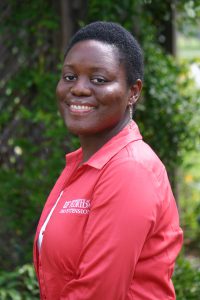Nicole Walker, director of UF/IFAS Extension Polk County and associate director of the UF/IFAS Extension Southwest District:
 Even though it’s inland, Polk County has seen its share of damage from hurricanes and tropical storms over the years. Nicole Walker, the director of UF/IFAS Extension Polk County and associate Extension director for the UF/IFAS Extension Southwest District, has been in Polk County for more than 20 years. Her areas of specialization are 4-H and community and as such, Walker, shares a special bond with many Polk County residents. Walker’s disaster-related activities are mostly after the storm to help assist residents in some of their most challenging moments. Here, she shares her front-line experiences from three storms that inflicted perilous damage on Polk County in 2004 and, of course, Hurricane Irma in 2017.
Even though it’s inland, Polk County has seen its share of damage from hurricanes and tropical storms over the years. Nicole Walker, the director of UF/IFAS Extension Polk County and associate Extension director for the UF/IFAS Extension Southwest District, has been in Polk County for more than 20 years. Her areas of specialization are 4-H and community and as such, Walker, shares a special bond with many Polk County residents. Walker’s disaster-related activities are mostly after the storm to help assist residents in some of their most challenging moments. Here, she shares her front-line experiences from three storms that inflicted perilous damage on Polk County in 2004 and, of course, Hurricane Irma in 2017.
Q: How many years have you been with UF/IFAS and what is your role?
A: 21 years, currently serving as Associate District Extension director for the UF/IFAS Extension Southwest Extension district as well as director for UF/IFAS Extension Polk County, with programming in 4-H youth development and community development.
Q: What hurricanes have you dealt with in your work over the years?
A: I was a young 4-H agent in 2004, when Polk County experienced three storms: Tropical storms Charley, Frances and Jeanne. All three eyes passed through south Polk in a six-week period. We also went through Hurricane Irma in 2017.
Q: How did the storms of 2004 impact your community?
A: In just a few weeks of 2004, three vicious storms changed many people’s lives in Polk County. We experienced perilous wind and torrential rains from the combination of storms. Charley spawned tornadoes. Many homes were wiped out. FEMA and other organizations stayed in Polk County for several months after the storms of 2004. Flash forward to 2017, and Hurricane Irma. By the time Irma arrived in Polk County, it was a Category 2 storm, and it caused significant damage and left tons of debris in its wake — debris that took almost a year to collect.
Q: For the tropical storms, what were your responsibilities?
A: In 2004, the county’s livestock facilities — where the Extension office is, in Bartow — housed domestic pets, mostly dogs. An out-of-state animal welfare organization set up and managed the domestic pet care and had many loads of supplies delivered. At one point during this time, I loaded dog food in a county vehicle, along with many EDIS documents about food safety, child mental health and other disaster-related topics. I traveled to a few locations around the county over several days to drop off resources to the homes of 4-H members or volunteers. I didn’t have any assigned responsibilities, so at the time, other people and I were just looking for something we could do. For Hurricane Irma, I had an assigned county responsibility to work at the citizen call center—mainly taking calls from people that were looking for information post-storm — and I was assigned to a special needs shelter. My shelter shift was directly following the storm — when it had passed over — and my shift helped get people discharged. In some cases, we helped residents determine ahead of time if their homes or neighborhoods were safe to return to.
Q: Hurricanes often require a team effort. Who was a part of the team you worked with for the storms, and what did they do?
A: Mainly for Hurricane Irma, I was part of the Polk County Commission’s response team. Polk government has a robust and highly professional emergency management team and a well-coordinated multi-division and multi-agency recovery program.
Q: What is something you will always remember about your experience with tropical storms Charley, Frances and Jeanne along with Hurricane Irma?
A: Regarding the 2004 hurricane season — three storms were like one long hurricane — I will always remember driving around and checking on 4-H folks. I remember several had been through such frightening circumstances, and at least one had lost their home — but everyone was safe. Regarding Irma, I will always remember going on duty at the shelter, and the eeriness of pitch-black darkness and quiet as the electricity surrounding the school was out, and everyone was inside.
 0
0
